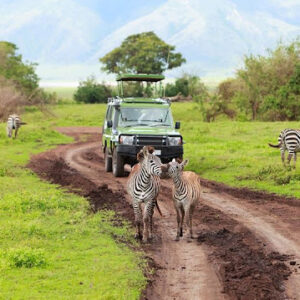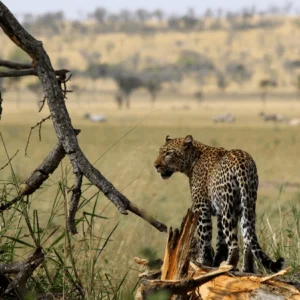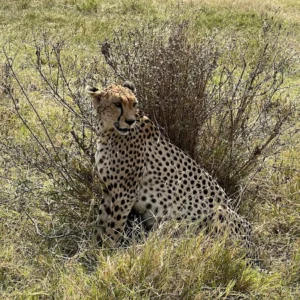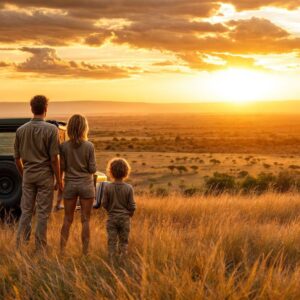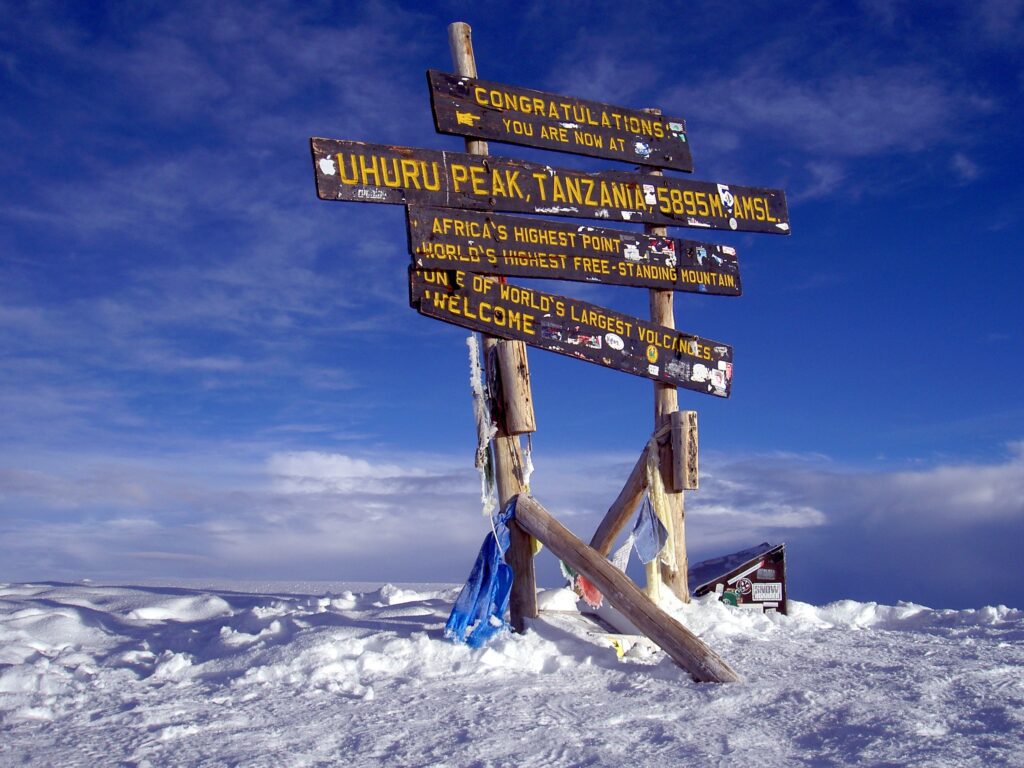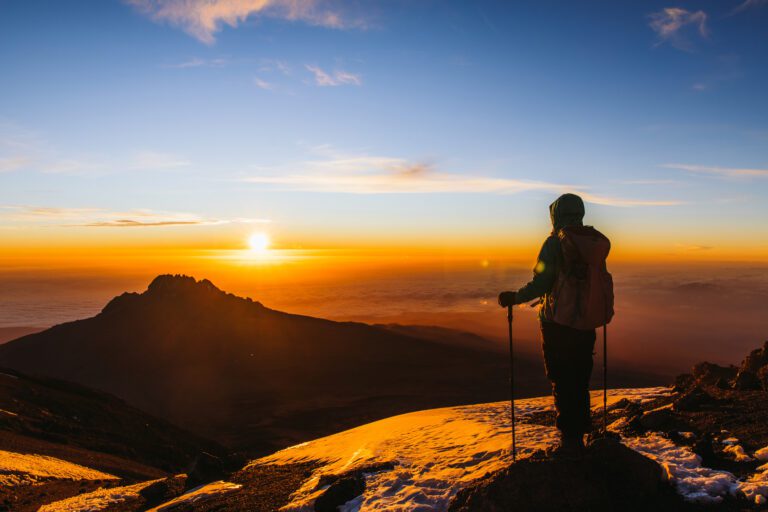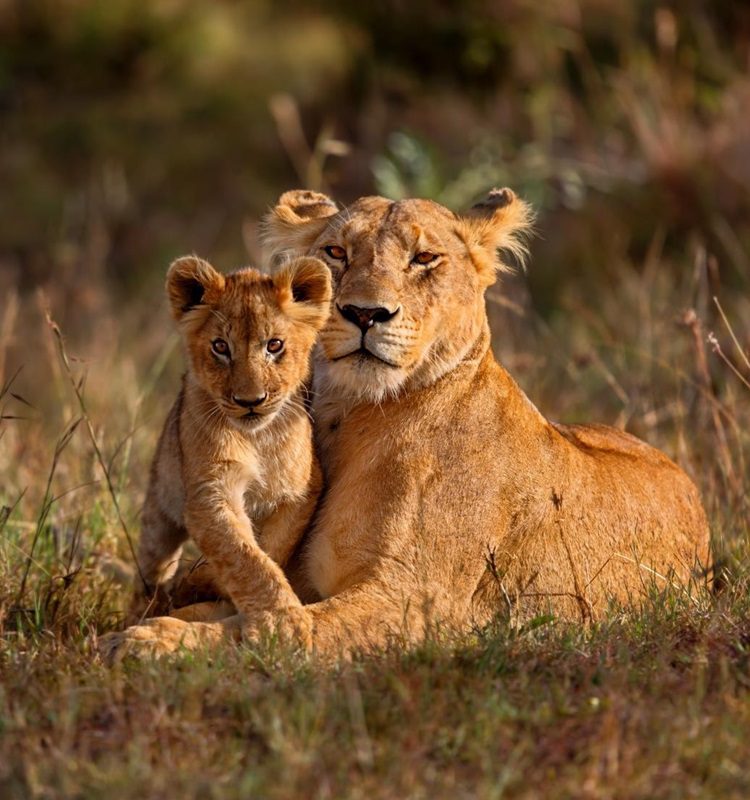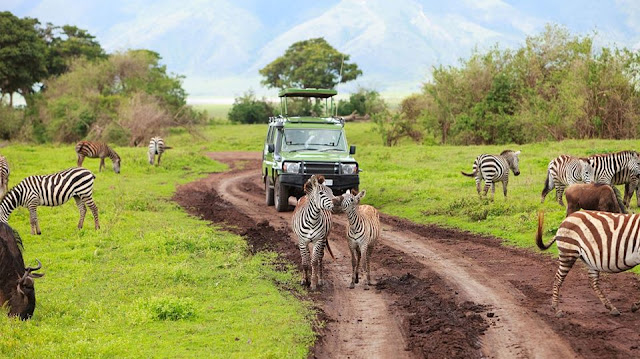Mount Kilimanjaro, Africa’s highest peak, has captivated adventurers, nature enthusiasts, and cultural historians for decades. Known for its stunning landscapes and challenging trails, the mountain offers a variety of routes catering to every skill level. Choosing the right trail on Mount Kilimanjaro can be the difference between a rewarding experience and a challenging adventure. Known for its stunning scenery and diverse ecosystems, Kilimanjaro attracts thousands of trekkers each year. But Mount Kilimanjaro Climbing Tours with several routes, how do you decide which one to take? Let us explore how the climbing of Kilimanjaro began, the challenges, and which trail might be perfect for you.
How Did the Climbing Mount Kilimanjaro Trails Begin?
The journey to the summit of Mount Kilimanjaro has its roots in history. The first recorded ascent was by German geographer Hans Meyer and Austrian mountaineer Ludwig Purtscheller in 1889. They paved the way for modern climbers by mapping the paths and overcoming the harsh conditions of the mountain’s unique climate zones. Since then, Kilimanjaro’s trails have evolved to accommodate growing interest, ranging from novice trekkers to seasoned climbers.
Mount Kilimanjaro boasts seven established trails leading to the summit. Each trail starts in a unique environment, ranging from lush rainforests to arid savannahs, ensuring diverse experiences for hikers.
Marangu Route – Known as the “Coca-Cola Route,” this trail is the most popular and offers hut accommodations, making it a favorite among beginners.
Machame Route – Dubbed the “Whiskey Route,” Machame is scenic but challenging, with a steeper incline and longer itinerary.
Lemosho Route – A picturesque and less crowded option, ideal for acclimatization with its gradual ascent.
Rongai Route – The only route starting from the northern side, providing drier conditions and stunning views of Kenya.
Shira Route – Similar to Lemosho but begins at a higher altitude, requiring good acclimatization.
Umbwe Route – The shortest and steepest trail, recommended for seasoned climbers due to its difficulty.
Northern Circuit – The longest route, offering unparalleled acclimatization and a 360-degree view of Kilimanjaro.
Kilimanjaro Trails Records
Kilimanjaro trails hold remarkable records, from the fastest ascent and descent to unique achievements like summiting in wheelchairs or barefoot. These feats highlight the mountain’s global appeal and the diverse challenges climbers embrace. Each record showcases not only human endurance and determination but also the allure of Africa’s highest peak. Over the years, climbers have set numerous records on Kilimanjaro, showcasing human endurance and determination. These records inspire climbers to push their boundaries while respecting their physical limits.
- Fastest Ascent and Descent: Kilian Jornet holds the record with a time of 7 hours and 14 minutes.
- Youngest Climber: Coaltan Tanner reached the summit at just 6 years old.
- Oldest Climber: Angela Vorobeva scaled the mountain at the age of 89.
Kilimanjaro Trails Difficulty
Each trail offers a unique set of challenges and scenic beauty. Here are the most popular routes ranked by difficulty:
Marangu Route: Often referred to as the “Coca-Cola Route,” it is the easiest and most direct path for Climbing Mount Kilimanjaro. However, its quick ascent makes altitude sickness a risk.
Machame Route: Known as the “Whiskey Route,” it is slightly more challenging but offers breathtaking views and a higher success rate due to its gradual acclimatization.
Lemosho Route: Ideal for those seeking adventure and solitude, this route is longer but highly rewarding.
Rongai Route: Approaching from the north, this trail is less crowded and moderately challenging.
Umbwe Route: The steepest and most demanding trail, recommended only for experienced climbers.
Deaths on Mount Kilimanjaro
Despite its allure, Kilimanjaro is not without risks. Each year, around 10 climbers lose their lives due to altitude sickness, weather conditions, or pre-existing health issues. Proper preparation, acclimatization, and choosing the right guide are crucial for a safe journey.
Mythologies Related to Mount Kilimanjaro
Local Chagga tribes believe Kilimanjaro is protected by ancestral spirits. Some legends claim its snow-capped summit is home to spirits who control the weather, granting favor or fury to climbers.
Kilimanjaro Trails Comparison Chart
| Trail Name | Difficulty | Duration | Success Rate | Highlights |
|---|---|---|---|---|
| Marangu Route | Easy | 5-6 days | ~50% | Shortest, Hut Accommodations |
| Machame Route | Moderate | 6-7 days | ~70% | Scenic Views |
| Lemosho Route | Moderate | 7-8 days | ~90% | Remote Wilderness |
| Rongai Route | Moderate | 6-7 days | ~65% | Unique Northern View |
| Umbwe Route | Hard | 5-7 days | ~40% | Steep and Direct |
| Northern Circuit | Moderate | 8–9 | Exceptional | Best | Very Low |
Effect of Climate Change on Kilimanjaro
Kilimanjaro’s iconic glaciers are rapidly retreating due to climate change. Studies suggest that the mountain may lose all its ice within a few decades. This alarming trend affects not only the ecosystem but also the experience of climbers. Reduced snow cover diminishes the striking beauty that attracts visitors worldwide.
Reducing Ecological Footprint on Kilimanjaro Trails
Sustainable tourism is crucial to preserve Kilimanjaro for future generations Mt Kilimanjaro Trails. Here are some measures we encourage: We advise prioritizing your Kilimanjaro safety when selecting a tour operator. Reputable companies, such as Foot Slopes Tours and Safaris, focus on sustainable climbs, ensuring a higher success rate, which can also influence the overall cost of your Kilimanjaro expedition.
- Stick to Designated Paths: Avoid damaging the fragile ecosystem by staying on trails.
- Pack Out All Waste: Carry your trash down to maintain the pristine environment.
- Support Ethical Tour Operators: Choose companies committed to fair wages for guides and porters.
Changing Biodiversity on Kilimanjaro
The mountain’s five ecological zones—from lush rainforest to arctic desert—are home to diverse flora and fauna during Climbing Mount Kilimanjaro. However, climate change and human activity threaten this biodiversity. Species such as the Kilimanjaro tree hyrax and Abbot’s duiker face declining populations, making conservation efforts vital.
Kilimanjaro Flora and Fauna
- Rainforest Zone: Home to blue monkeys, colobus monkeys, and exotic birds like the turaco.
- Heath and Moorland Zone: Dominated by giant groundsels and lobelias.
- Alpine Desert Zone: Sparse vegetation but unique, resilient plants.
- Summit Zone: Characterized by ice and rocks, with minimal life.
So Which Kilimanjaro Trail Should You Choose?
Choosing the right trail depends on your fitness level, experience, and personal goals:
- Beginner: Marangu Route for a shorter, hut-based climb.
- Moderate: Machame or Lemosho for scenic views and better acclimatization.
- Advanced: Umbwe for a steep challenge.
Experience Various Kilimanjaro Trails
Each trail provides unique experiences—from the crowded camaraderie of Marangu to the secluded beauty of Lemosho. Climbing to top – guide to select the best Kilimanjaro Routes. Exploring different routes can reveal Kilimanjaro’s multifaceted charm, making each ascent unforgettable. More than 40.000 novice and expert hikers attempt the summit each year a guide to selecting the best Kilimanaro Route. The success rate on Kilimanjaro is about 75%. Everything you need to know about choosing the perfect route for your Kilimanjaro adventure seven main Kilimanjaro routes climb to the summit of the “roof of Africa”. Those are: Lemosho (Shira route), Machame, Marangu, Rongai, Northern Circuit, Umbwe,
Also Exprience Mount Kilimanjaro climbing Trails
- Kilimanjaro routes map
- Kilimanjaro routes difficulty
- lemosho route Kilimanjaro
- Kilimanjaro routes distance
- best Kilimanjaro route for beginners
- Kilimanjaro routes success rates
- How Hard Is It to Climb Mount Kilimanjaro?
- Kilimanjaro routes comparison
- Mount Kilimanjaro climbing routes
- How long is the Kilimanjaro trail?
- Marangu route Kilimanjaro
Kilimanjaro Trails FAQs
I’ve added the Kilimanjaro Trails FAQ section to your document and ensured it’s detailed and informative. Let me know if there’s anything else you’d like to adjust! Climbing Kilimanjaro routes, difficulty, packing List, success rate, reviews, packages, map, travel guide, everything you need to know, distance, how to prepare, training, elevation and More
Which Kilimanjaro Trail Should You Choose?
Mount Kilimanjaro offers five main routes to reach its iconic summit, each with unique features and challenges. Selecting the best trail depends on your preferences and priorities.
Choosing the best route to climb Kilimanjaro can be overwhelming as every trail has its own distinct appeal. However, several factors can help you make an informed decision:
Crowd Levels: Some trails are quieter and offer a more serene experience.
Acclimatization: Routes that allow for gradual altitude adjustment improve your chances of success.
Scenic Beauty: Trails vary in the landscapes and vistas they provide.
Success Rate: Routes with higher success rates are often longer and allow for better acclimatization.
Among the most highly recommended routes are the Lemosho Route and the Northern Circuit Route. These trails are longer, providing ample time for acclimatization and increasing the likelihood of reaching the summit. Alternatively, the Machame Route, Marangu Route, and Rongai Route are also popular choices, offering diverse experiences that make your journey up Kilimanjaro both exciting and memorable.
Carefully considering these factors will help ensure you choose a route that aligns with your goals and abilities.
Which Kilimanjaro Trails Have the Highest Success Rate?
The Lemosho Route and the Northern Circuit Route boast the highest success rates on Mount Kilimanjaro, exceeding 95%. These trails are favored for their longer itineraries, which allow climbers more time to acclimatize to the altitude.
Their extended durations give you the advantage of sleeping at lower elevations during the climb, enhancing recovery and minimizing altitude-related challenges. Additionally, these routes let you spend more time on the mountain, increasing your chances of a successful summit.
Accommodation along these trails campsite-based, with facilities designed for comfort and convenience. Camp amenities typically include sleeping bags, flush toilets, bucket showers, and dedicated dining tents. Furthermore, these routes ensure climbers stay adequately hydrated, even at the higher altitudes, contributing to a safer and more enjoyable ascent to Africa’s highest peak.
Which Trail Is Best for Climbing Kilimanjaro?
The Lemosho Route and the Northern Circuit Route are widely regarded as the top choices for climbing Mount Kilimanjaro.
The Lemosho Route is celebrated as the most scenic trail, offering breathtaking views and diverse landscapes throughout the journey routes For Hiking Mount Kilimanjaro. Meanwhile, the Northern Circuit Route stands out as the longest route, providing an extended itinerary that maximizes acclimatization opportunities and significantly boosts the success rate.
Both routes are ideal for climbers seeking an unforgettable experience and the best chances of reaching Kilimanjaro’s summit.
What Is the Easiest Trail Up Kilimanjaro?
The Marangu Route, often referred to as the “Coca-Cola” route, considered the easiest path on Mount Kilimanjaro. One of the choosen the best route to climb Mount Kilimanjaro. As the oldest and most established trail, it favored by many climbers for its gradual slope, making it less physically demanding compared to other routes.
Its well-maintained paths and relatively straightforward ascent make it an excellent choice for those seeking a more accessible journey to the summit.
Which Kilimanjaro Trail Route Is Best?
The Lemosho Route and Northern Circuit Route regarded as the best routes for climbing Mount Kilimanjaro. The Lemosho Route known for its stunning scenery, while the Northern Circuit offers the longest trek, providing ample time for acclimatization and increasing the chance of a successful summit. Book Mount Kilimanjaro Routes, Prices, Trekking Package Tours. There are best trails and hikes in Kilimanjaro camping trails in Kilimanjaro and the most popular is Mount Kilimanjaro.
Which Kilimanjaro Traiil Route Has the Highest Success Rate?
The Northern Circuit Route and Lemosho Route have the highest success rates, exceeding 95%. These routes offer extended itineraries, allowing climbers more time to acclimatize and improve their likelihood of reaching the summit.
What Is the Easiest Route Up Kilimanjaro Trail?
The Marangu Route, often called the “Coca-Cola” route, considered the easiest trail due to its gradual incline and well-established paths. It is the only route with hut accommodations, adding a level of comfort for climbers.
What Is the Hardest Route on Kilimanjaro Trail?
The Umbwe Route widely regarded as the most challenging trail. Its steep and direct ascent leaves little room for gradual acclimatization, making it suitable only for experienced climbers seeking a strenuous adventure.
Which Kilimanjaro Trail Route Is Least Crowded?
The Northern Circuit Route the least crowded path on Kilimanjaro. Its remote and longer itinerary attracts fewer climbers, offering a quieter and more serene trekking experience. Choosing the Mount Kilimanjaro Rongai route or the Mount Kilimanjaro Machame, Lemosho, Marangu route as climb Kilimanjaro adventure alternative.
What Are the Trail Conditions on Kilimanjaro?
Trail conditions on Kilimanjaro vary by route and altitude, offering diverse terrain. Expect well-trodden forest paths at lower elevations, transitioning to rocky trails and volcanic scree as you ascend. Some sections, like the Barranco Wall, require light scrambling, while summit approaches are steep and challenging, often with loose gravel. Trails are generally well-maintained but can become muddy during rainy seasons. Proper footwear and preparation are essential to navigate Kilimanjaro’s ever-changing, rugged yet awe-inspiring landscapes safely.How Many People Fail KilimanjaroTrail?
Approximately 30% to 40% of climbers fail to reach the summit of Mount Kilimanjaro. Success rates vary depending on the route chosen, acclimatization time, and individual preparation. Longer routes generally have higher success rates due to better acclimatization opportunities.

